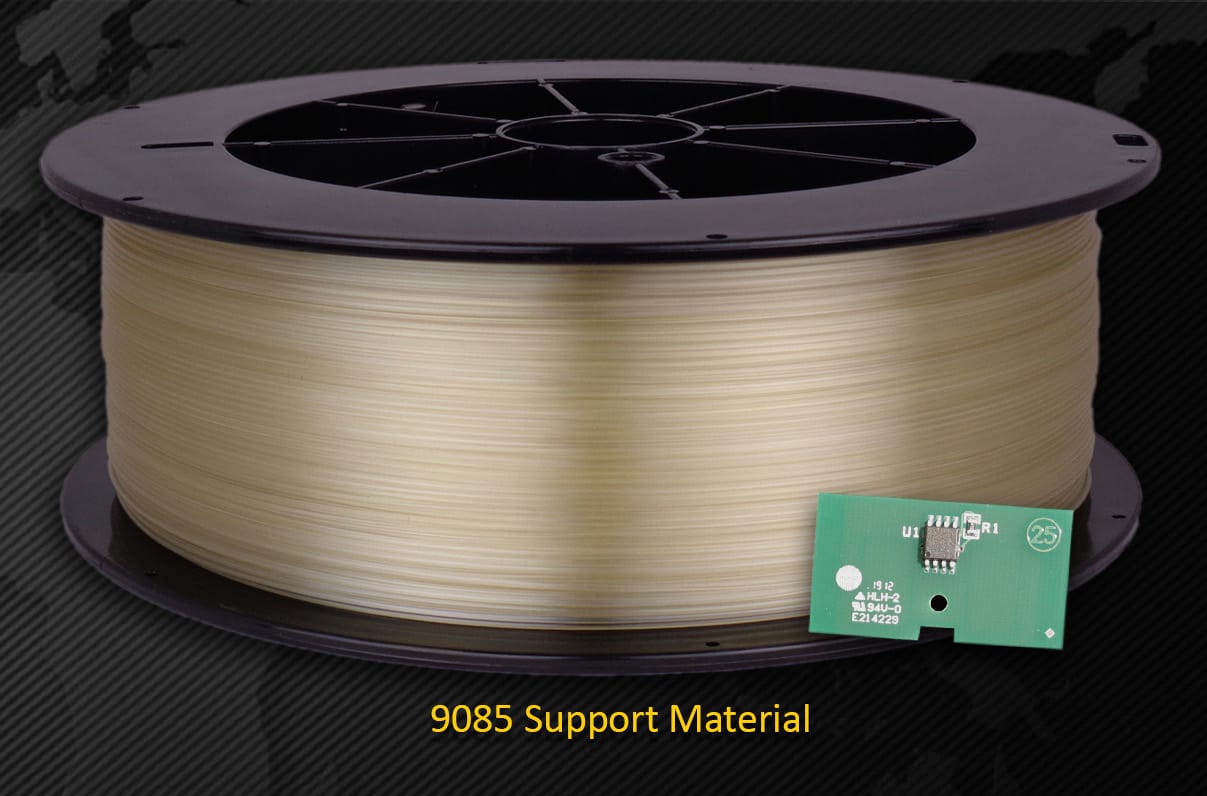
I’m looking at the new material offerings from Triton 3D, who claim to produce Stratasys-compatible filament spools.
The company produces a line of compatible filament spools that address the price level imposed by Stratasys for their equipment.
For all Stratasys extrusion-based 3D printers, it is required that you use Stratasys’ own cartridges and canisters of filament. The machines are designed to recognize valid materials through a chip that is included on the cartridge or canister.
These chips are there for technical reasons, in addition to revenue reasons: the chips inform the system of the specific type of material being loaded so that it can a) adjust settings appropriately, and b) ensure the correct type of filament is being used.
This is actually quite important, because people buy their equipment in order to obtain high quality prints. That is ensure not only by developing a top-class machine, but also by ensuring top-quality material of high consistency is used in it.
The intended material, a plastic, is a specific chemical mix developed by Stratasys from which they derive the optimum print settings. It’s possible lesser machines could match the output, but only after careful optimization of settings.
Now you can buy alternative filament spools for your Stratasys machine from Triton 3D. The company currently markets a list of products that match some of Stratasys’ materials, including:
- Ultem 9085 model and support
- Ultem 1010 model
- Polycarbonate (black/white)
- PC/ABS (black/white)
They say their prices are around 25% less than Stratasys’ list prices, which could definitely add up if you are doing a significant amount of printing. Currently Triton 3D seems to offer a canister of Fortus PC-ABS for USD$275, which is quite a bit less than the going rate for the Stratasys original material, for example.
In addition, Triton 3D also intends on marketing more advanced materials, some of which Stratasys does not yet market, including:
- ESD-PC (available June 1)
- ESD-ABS (available June 1)
- CF-ABS (available July 1)
- ASA (available July 1)
- Transparent ABS (available July 1)
- ABS (available August 1)
This is quite an interesting question.
Why? You’d think this would be a no-brainer as you might just want to pay a lower price. But there’s a lot more to it than you might realize.
First, there is the issue of warranty and support. I suspect that if you run non-Stratasys material through a Stratasys machine, you may void the warranty. You might also void any support contracts on the equipment, such that they may insist on re-certifying the machine before further support is provided. That could prove very costly.
But it may be that your machine is off warranty and you’re supporting it yourself, and such matters are of little consequence. Many 3D print services actually operate in this way.
But for them there are further challenges.
Consider the case of 3D printing a production part, a part that must include its provenance for legal reasons. The part must list the machine it was produced on, the exact material used and much more. It may even be that the client requires the part printed in specific materials, such as Stratasys’ ABS M-30, for example.
In the end I believe the third party materials market is indeed an option, but only for a subset of Stratasys clients. For them, they may be able to save some cash if the circumstances warrant.
Triton 3D is one source for third party Stratasys material. There are several others pursuing this market, which exists only because of the relatively high prices charged by Stratasys for their materials.
Via Triton 3D

